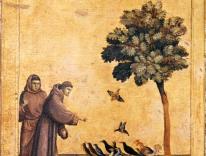In June 2010, I made a stop in Boston to meet a friend for lunch. We had planned to eat at a swanky bistro with a view of the Atlantic and, in the distance, planes soaring into the sky from Logan Airport.
It was a day illuminated by summer sunshine, a Friday of loosened ties and rolled-up sleeves. Boston Common felt like a college campus.
Driving to pick up my friend, I quickly got lost in gridlock. I was circling Boston’s streets, fumbling to read the directions on my Blackberry, looking up and slamming the brakes.
Approaching one intersection for the second or third time, I caught sight of something off to my right. It was a wheelchair. Next to it was a man lying on the ground. I was alarmed. Had he fallen off? Was anyone helping him? Was he hurt? Just a few yards ahead, on the right, I saw an alleyway. Should I turn in?
I ticked through these questions as I waited for the light to change, glancing from it to the man on the ground. The light turned. I looked up, saw green, and drove. Someone will help him, I thought.
As I accelerated beyond the intersection, I glanced into my rearview mirror. I watched someone stride toward the man and the wheelchair and, with perfect grace, sidestep both.
Oh my God, I thought, as I drove further. No one is helping him. How could someone walk right past him?
I thought about my plans. I could return to the man on the ground, but who knew how long that would take? What if he was homeless? Where would I take him? Would he be safe to bring into my car? What if I had to cancel lunch? I had only a couple of hours in Boston; I rarely saw this friend and didn’t want to disappoint her.
I didn’t go back.
After lunch, I hit the road again to drive to New Hampshire. It was then that I began to contemplate what had occurred earlier that day. Shame settled in like a migraine. The truth that any reader now sees began to envelop me: I had driven into a modern-day parable of the Good Samaritan, and I failed. I saw a victim crumpled on the side of the road, and I did nothing. Actually, I rationalized. I coached myself not to assist. And then I watched the fallen man get sidestepped, and kept going.
At the time, I had just finished a year teaching Scripture to high school sophomores. We had covered the Good Samaritan, as well as the radical, terrifying words of Jesus about the demands of discipleship. I knew Catholic theology and followed the chatter on Catholic blogs, frequently giving my opinion on divisive issues. I considered myself a practicing Catholic.
But when it really mattered, when I encountered a human situation that Christ explicitly anticipated, my immersion in Catholic thinking had as much impact as my knowledge of geometry. My convictions and dispositions, the thousands of words I had spilled into comment boxes online, did not motivate me to pull over, get out of my car, and give a hand to the man on the ground.
The memory of my omission still pierces me, because I still so readily intellectualize my faith. I drift into abstract questions or fixate on viewpoints, advocating this and criticizing that, often without any sense of how these opinions spur me to tend to the sick, pick up a cross, or love an enemy. I become a really good spectator.
Page after page of the Gospels, however, tells me that followers of Jesus do not exist to gaze. I am not here to watch the human condition like an astronomer searching the sky. Christians embrace a faith in which embodiment—Jesus’ and ours—is central. A bleeding woman, a blind man, a lost son: these are the icons of affliction that reveal whom Christ has come to serve and save. They are the icons of those whom we are called to serve and save in the ordinary experiences of our lives, in a hospice, in a shelter, at a school. Or on a busy Boston street.
Please email comments to [email protected] and join the conversation on our Facebook page.
Share
Previous Story
Inward Bound
Next Story
‘Year 1 p.s.U.’

